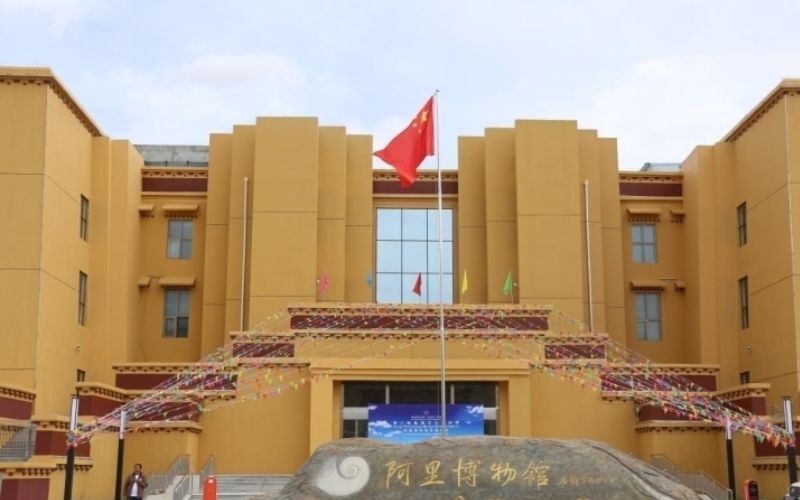Amid the increasing number of Tibetan museums and the flourishing preservation of plateau culture, China claims that these cultural institutions play a vital role in promoting education and cultural understanding among tourists, especially the younger generation. These museums have become affordable and culturally enriching attractions, drawing attention during the peak tourist season.
According to recent report, China is claiming that this cultural expansion showcases Tibet’s rich heritage and offers a convenient way for people to connect with the region’s history, culture, and customs, contributing to Tibet’s social and cultural development.
Museums play a key role in the preservation and promotion of cultural heritage and help understand history better. However, the presence of museums & cultural institutions in occupied Tibet is striving to legitimize China’s claim to authority over the region, as well as to promote a particular Chinese narrative about Tibetan history & culture.
The so called Ali Museum in Tibet claims to be 5956.34 square meters, was inaugurated as part of the 8th Xiangxiong Cultural Tourism Festival. While the festivities portray a vibrant celebration of local culture, a closer look reveals a deeper narrative of identity suppression. The museum, purportedly showcasing the history and culture of the region, instead presents a tailored version of Tibetan heritage that aligns with the Chinese narrative.
The most striking change is the name itself. The term “Ngari,” which resonates with the Tibetan community in Tibet or in exile, has been replaced with the Mandarin name “Ali”. This linguistic shift is not just a casual translation; it reflects the ongoing effort by the Chinese government to strip Tibet of its distinct identity and assimilate it into the broader Chinese framework.
Seven permanent exhibitions within the museum subtly propagate the Chinese viewpoint, relegating the rich Tibetan history and heritage to the periphery. Themes such as “Alibaba’s natural geography” and “outstanding historical figures of Alibaba” underscore the distortion of Tibetan history, conveniently molding it to fit a Chinese context. The manipulation of historical events and the omission of significant aspects of Tibetan culture further underline the agenda to rewrite the region’s narrative.
In 2021, CCP launched a “memorial hall” to “display the photos and items from the serfdom era”. The hall claimed to showcase “torture instruments and ritual artifacts made from serfs’ bones and skin, and those recording the democratic reform and serfs’ new lives”. This is in continuation of the CCP propaganda of the so-called ‘Serf Emancipation Day’ – it was invented in January 2009, more specifically to counter the March 10th Tibetan uprising day. As pointed out by Tsewang Gyalpo Arya, all these talks of liberation, democratic reform, and economic development are a farce and pure propaganda to mislead the international community and to justify its illegal occupation of Tibet.
The Potala Palace, the erstwhile winter palace of His Holiness the 14th Dalai Lama has also been converted to a museum. With nearly 800 sensors placed around the palace, multiple monitoring tools and nine kilometers of fiber optic cables installed inside, the sacred space of Tibetans has been reduced to spectacle. Today, Potala Palace has been commodified as a tourist attraction; China state-sponsored media and Chinese bureaucrats use Potala as the poster child for Han Chinese tourism. This, along with the musealisation of the palace, are attempts to erase the past, and the religious and cultural significance of the Tibetan structure.
The construction of these museums also ties into China’s broader agenda of increasing tourism in the region. This influx of tourists serves as a form of cultural colonization, further undermining Tibetan identity and autonomy.
There is one museum that serves as a testimonial to the resistance and resilience of Tibetans forced into exile by China. The Tibetans-in-exile have been putting up a brave fight against the misrepresentation of their past by China. The Tibet Museum at Dharamshala, India is a “museum made by and for Tibetans” with an aim to “challenge the representations of Tibet and Tibetan people that feature in museums in China” and elsewhere. The museum tells a “different story”; Tibet in this museum “has a past, a present and a future”, unlike China’s museums which are packaged spectacles that tell stories of pain, anger and betrayal.
Edited and collated by Team TRC
tibetrightscollective.in

